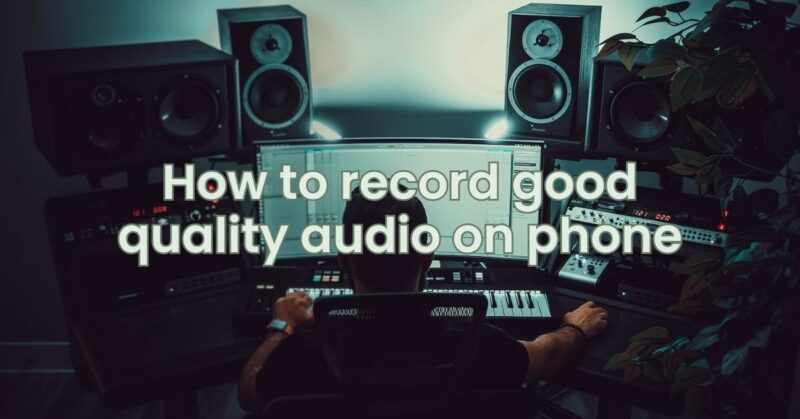In today’s digital age, smartphones have become versatile tools that enable us to capture moments through photos and videos. However, the built-in microphones on most phones often fall short when it comes to recording high-quality audio. Whether you’re recording interviews, podcasts, music, or any other audio content, achieving good sound quality is essential. In this article, we’ll explore a range of tips and techniques to help you record top-notch audio using your smartphone.
1. Choose the Right Environment
Selecting an appropriate recording environment is crucial for capturing clean audio. Choose a quiet and controlled space to minimize background noise and interference. Avoid recording in areas with heavy echoes or outdoor locations with excessive wind noise.
2. Optimize Microphone Placement
Most smartphones have multiple built-in microphones. Position the phone’s microphone close to the sound source for better audio quality. If possible, point the microphone toward the speaker or the primary source of sound.
3. Use External Microphones
Investing in an external microphone can significantly improve audio quality. There are various options available, including clip-on lapel microphones, shotgun microphones, and USB microphones that can be connected to your phone. These external microphones offer better sensitivity and noise reduction compared to built-in microphones.
4. Wind Protection
When recording outdoors, wind noise can be a major issue. To combat this, use a windscreen or a foam cover to protect the microphone from wind gusts. This simple accessory can make a significant difference in the clarity of your recordings.
5. Adjust Recording Settings
Most smartphones allow you to adjust recording settings. Look for options like “High-Quality Audio” or “Lossless” recording formats. These settings will record audio at a higher bitrate and offer better audio fidelity.
6. Avoid Digital Zoom
If you’re recording video along with audio, avoid using digital zoom. It can degrade the quality of both the video and audio. Instead, physically move closer to the subject to maintain audio clarity.
7. Monitor Audio Levels
Keep an eye on the audio levels while recording. Avoid letting the audio levels peak into the red, as this can result in distortion. Many recording apps display visual indicators to help you monitor audio levels in real-time.
8. Use Recording Apps
Third-party recording apps often offer more control over audio settings than the default app. Look for apps that allow you to adjust sample rates, bitrates, and provide features like noise reduction and equalization.
9. Minimize Background Noise
Background noise can be distracting in recordings. Close windows, doors, and turn off fans or other noisy appliances. If needed, consider using soft furnishings or blankets to dampen echoes and reverberation.
10. Edit and Enhance
After recording, use audio editing software to fine-tune your recordings. You can adjust levels, remove background noise, apply EQ, and enhance overall audio quality.
Conclusion
Recording high-quality audio on your smartphone is entirely possible with the right techniques and equipment. By selecting the right environment, optimizing microphone placement, and using external microphones, you can capture clear and crisp audio that enhances the overall impact of your content. Whether you’re a journalist, content creator, or a casual recorder of memories, these tips will help you unlock the full potential of your smartphone for capturing exceptional audio recordings.


